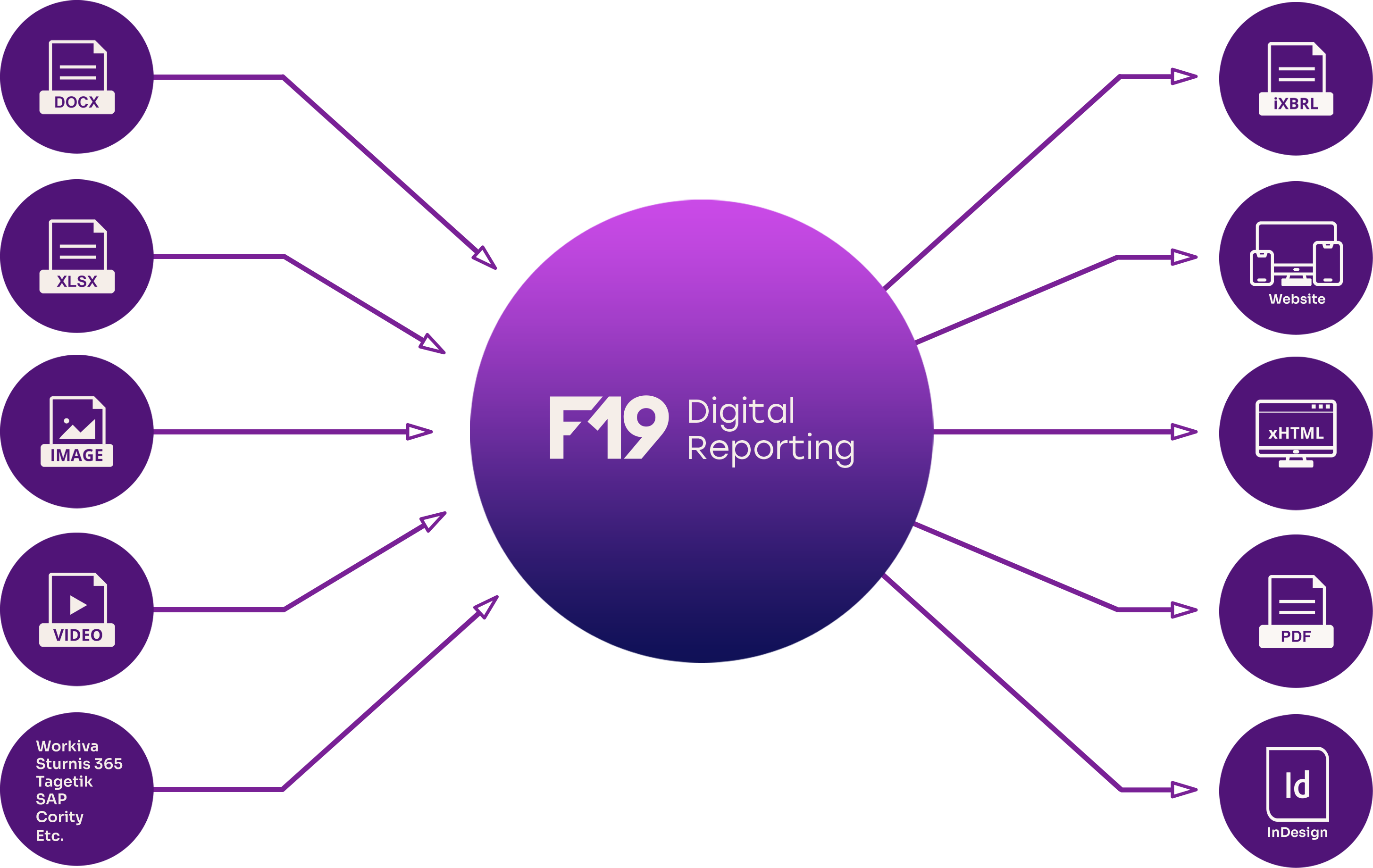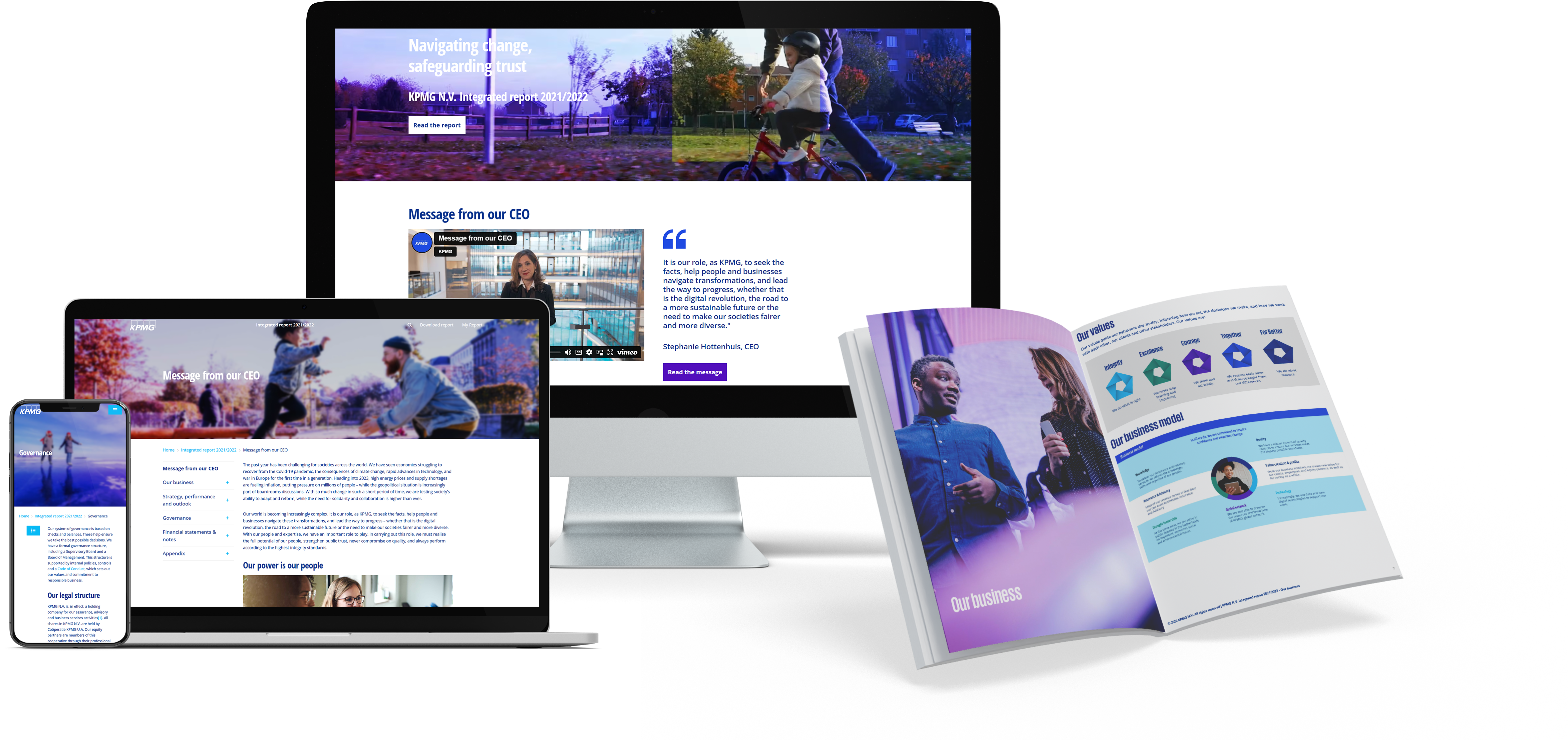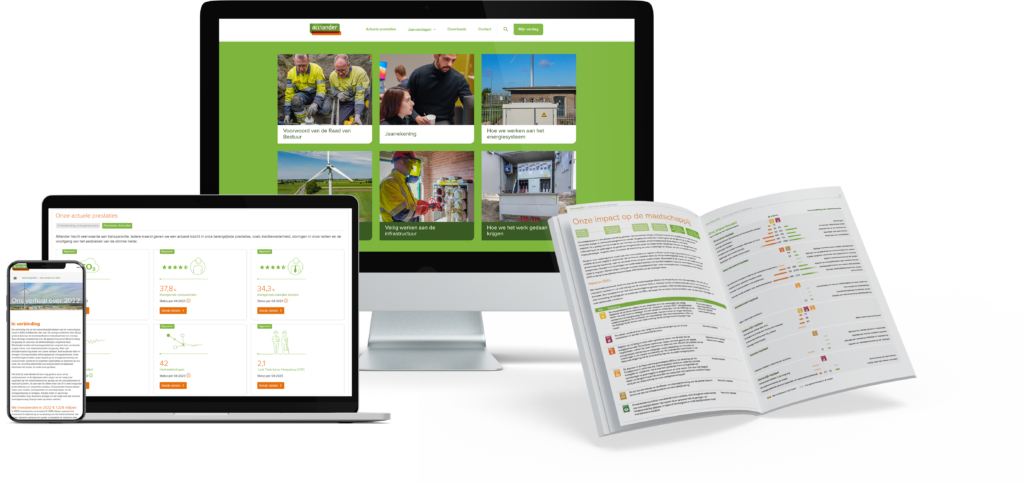Welcome to
The future of corporate reporting
Streamline the “last inch” in corporate reporting with F19,
the digital-first, multichannel publishing platform.
- Be in full control
- Tag your ESEF and CSRD reports
- Publish to multiple fully designed output channels

A selection of
Our highly valued clients





















Testimonials
What people say
Tagging data and publishing an ESEF report is very easy with the F19 platform
Aalt van ‘t Pad
Specialist Corporate Reporting & Planning
at Alliander
What struck us the most when working with the F19 platform is its user-friendliness
Monique van den Heuvel
Manager Integrated Reporting
at Port of Rotterdam
Already in the first year, the team saved a considerable amount of time
Gerrit van de Hoel
Manager Finance & Accounting
at Jumbo Supermarkets

Client cases
KPMG Integrated Report 2021/2022
KMPG Netherlands uses the F19 platform to publish its Integrated Report 2021/2022 as a responsive website and as a PDF file.
Heijmans Annual Report 2023
Heijmans uses the F19 platform to publish its Annual Report 2023 as a responsive website, a PDF file and as an ESEF report.


Alliander corporate reporting center
Alliander uses the F19 platform for continuous reporting and for the publication of multiple corporate reports as a responsive website, and PDF file.
The benefits of
F19 Digital Reporting
At F19 Digital Reporting, we are dedicated to developing the most user-friendly software for streamlining the ‘last inch’ of reporting: the complex final stage of the reporting process where a fully designed report must be published in various formats, including inline XBRL, which is the mandatory format for ESEF and CSRD reports.
- It enables end users to import and combine content and data from various systems and sources.
- End users can easily adjust the content and layout themselves, tag it, and safely co-create the report with their creative agency.
- When ready, end users can publish the report in various formats from one single source: For example, as a website, as a PDF and as native iXBRL. Besides, because the F19 platform is a headless content management system (CMS) our experienced partners can develop tailor-made applications that are future-proof. End users can collaborate with them to create an engaging media mix that exceeds stakeholders’ expectations.
Do you wish to learn more? Then please contact us for a free demo. We are happy to show you all the benefits of Digital-First, multichannel reporting with F19.
